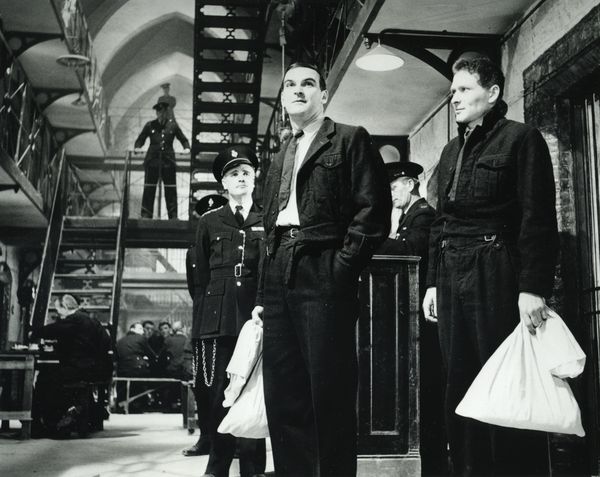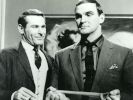Eye For Film >> Movies >> The Criminal (1960) Film Review

Joseph Losey's sharp-edged crime drama never quite goes where you expect it to - sometimes to its detriment - as it tells the tale of Johnny Bannion (Stanley Baker at his broody best), a career criminal who we meet near the end of his latest stretch and with plans already afoot for his next score.
Losey - as you will learn if you listen to the commentary track that accompanies the film on its latest Studiocanal release - was at pains to recreate prison life in detail and he gives a palpable sense of the hierarchy in a short space of time, using the return of a prisoner, Kelly (an almost impossibly young Kenneth Cope) to show the pecking order.

Bannion may be top dog in his block but he's also butting heads with warder Barrows (Patrick Magee) and watching the film today, it seems almost impossible to believe that it wasn't also seen at some point by a young Dick Clement and Ian La Frenais, so close are the characters - though not played for comedy - to those who would later crop up in Porridge. The battle of wills between Bannion and Barrows almost replicated by that of Fletch and Mr Mackay.
On the outside, and handed cash by the slick Mike Carter (Sam Wanamaker), trouble is lurking in the form of Suzanne (Margit Saad), who appears in his life and quickly becomes a part of it. It's all an unnecessary complication when he has that heist to pull off and we all know where he is going to end up. When it comes to style, Losey's film, written by Alun Owen an Jimmy Sangster, has it in spades. He and his cinematographer Robert Krasker use the space inside the prison well, whether its the full depth of the cellblock, Barrows looming into view or the claustrophobia of the individual cells.
Losey was evidently fascinated by the prison hierarchy, which has shades of the class system he would later probe in The Go-Between and The Servant. This makes for vibrant prison scenes, as loner Bannion finds himself in an increasing bind but it also means the other elements of the film, particularly Bannion's love interest and his ex-girlfriend (Jill Bennett, cheerfully unhinged), feel undercooked. The film succeeds much more on the level of general mood, with Baker creating a constant sense of threat around Bannion. Even though the physical violence is kept to a minimum, Losey uses the sound of a riot to help feed the mounting oppression, mirroring the psychological turmoil within Bannion himself.
The scoring from Johnny Dankworth and featuring a recurring melancholy theme sung by Dankworth's wife Cleo Laine, also underscores the film's air of Bannion being trapped, even on the outside. The plot might not quite hang together but the film is filled with memorable moments - whether its Bannion trying to snag some alone time with a fabulously retro sunlamp or the sight of someone digging desperately in snow. Look out, too, for Prime Suspect star Tom Bell, who crops up towards the end in a small role. Not Losey's finest hour, perhaps, but in terms of its depiction of the prison set-up and hierarchy long-reaching in its influence.
Reviewed on: 18 Sep 2019


















